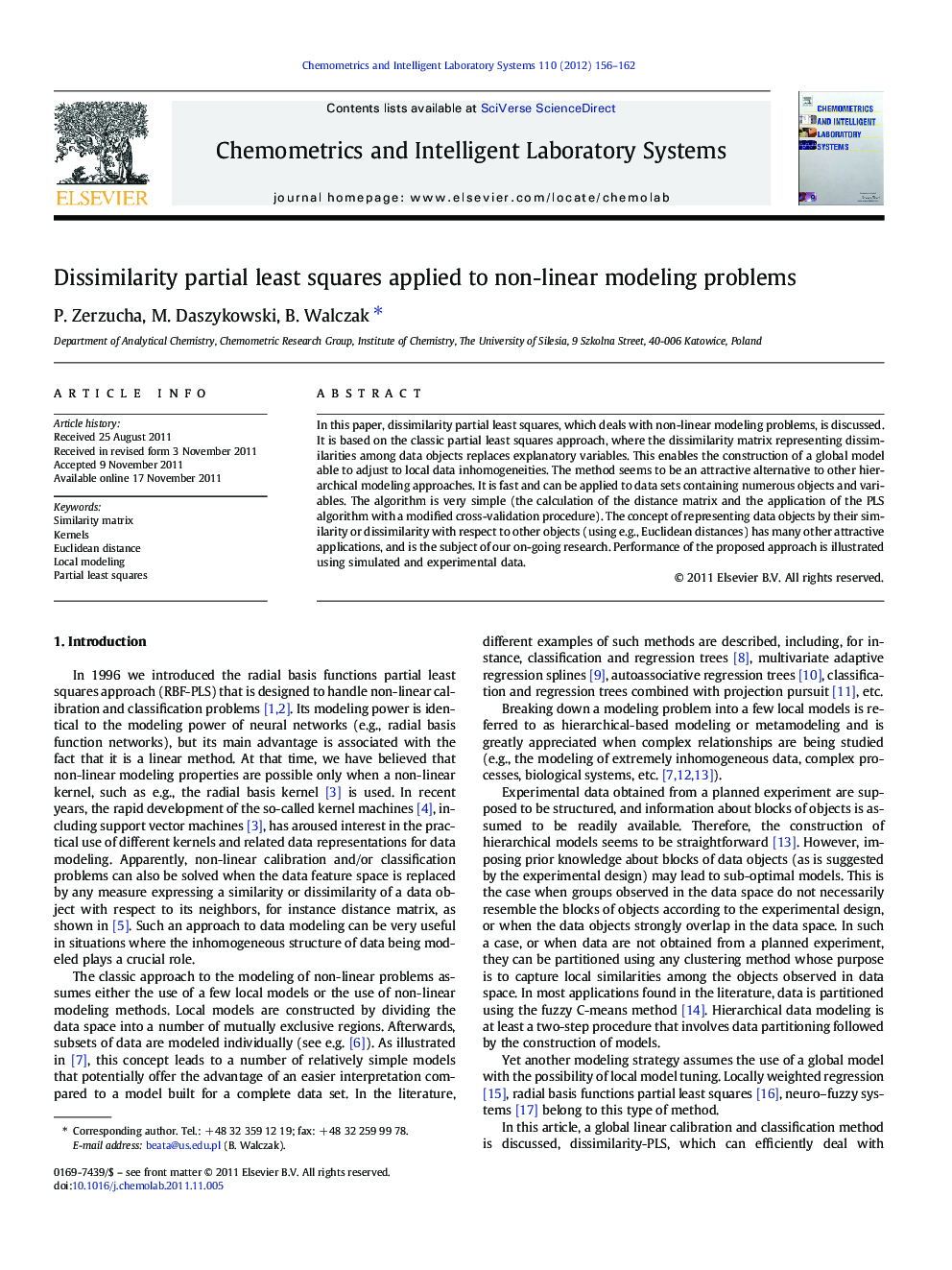| Article ID | Journal | Published Year | Pages | File Type |
|---|---|---|---|---|
| 1180949 | Chemometrics and Intelligent Laboratory Systems | 2012 | 7 Pages |
In this paper, dissimilarity partial least squares, which deals with non-linear modeling problems, is discussed. It is based on the classic partial least squares approach, where the dissimilarity matrix representing dissimilarities among data objects replaces explanatory variables. This enables the construction of a global model able to adjust to local data inhomogeneities. The method seems to be an attractive alternative to other hierarchical modeling approaches. It is fast and can be applied to data sets containing numerous objects and variables. The algorithm is very simple (the calculation of the distance matrix and the application of the PLS algorithm with a modified cross-validation procedure). The concept of representing data objects by their similarity or dissimilarity with respect to other objects (using e.g., Euclidean distances) has many other attractive applications, and is the subject of our on-going research. Performance of the proposed approach is illustrated using simulated and experimental data.
► New method which deals with non-linear modeling problems. ► Construction of a global model able to adjust to local data inhomogeneities. ► Attractive alternative to hierarchical modeling approaches. ► Method can be applied to data sets containing numerous objects and variables.
